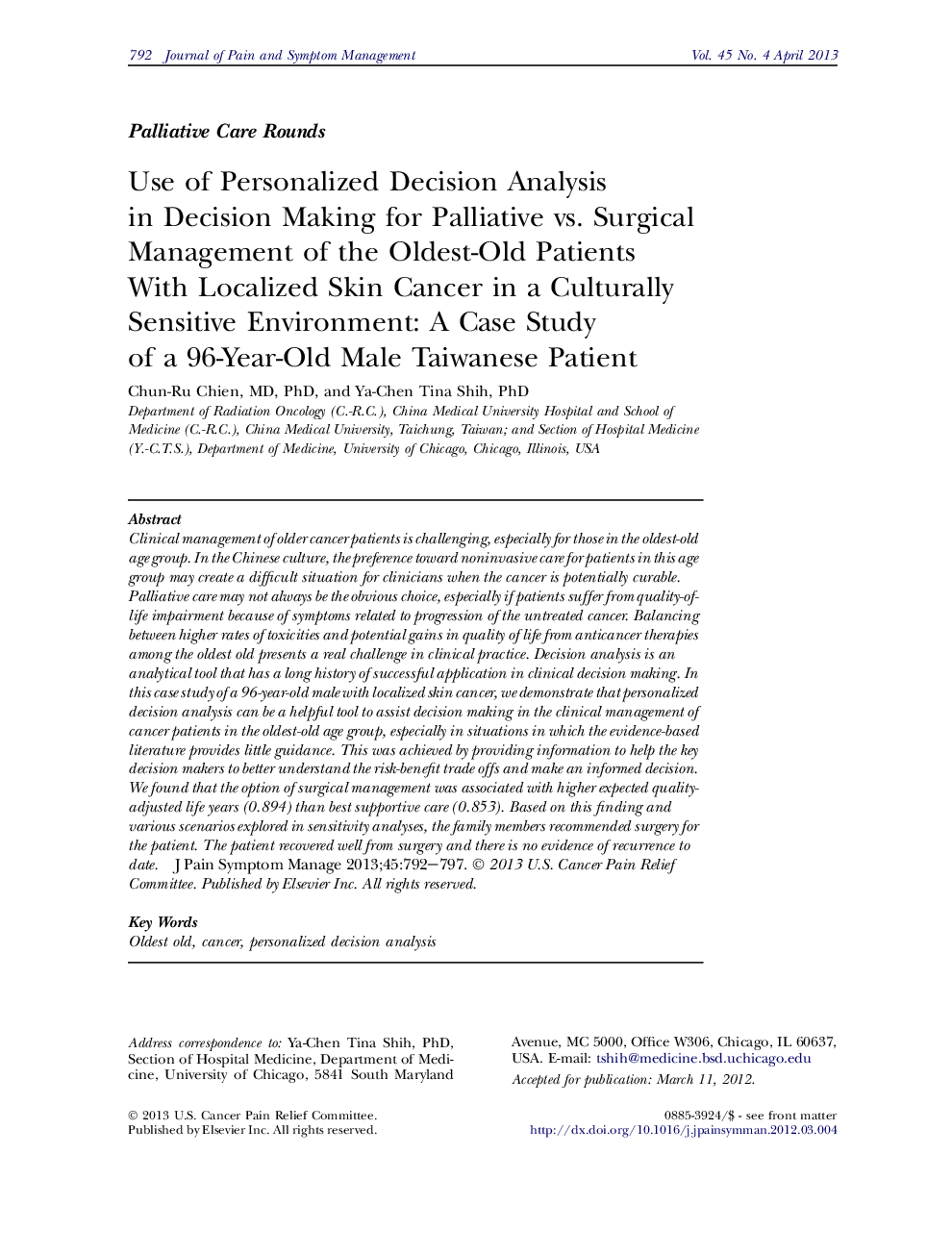| Article ID | Journal | Published Year | Pages | File Type |
|---|---|---|---|---|
| 2736052 | Journal of Pain and Symptom Management | 2013 | 6 Pages |
Clinical management of older cancer patients is challenging, especially for those in the oldest-old age group. In the Chinese culture, the preference toward noninvasive care for patients in this age group may create a difficult situation for clinicians when the cancer is potentially curable. Palliative care may not always be the obvious choice, especially if patients suffer from quality-of-life impairment because of symptoms related to progression of the untreated cancer. Balancing between higher rates of toxicities and potential gains in quality of life from anticancer therapies among the oldest old presents a real challenge in clinical practice. Decision analysis is an analytical tool that has a long history of successful application in clinical decision making. In this case study of a 96-year-old male with localized skin cancer, we demonstrate that personalized decision analysis can be a helpful tool to assist decision making in the clinical management of cancer patients in the oldest-old age group, especially in situations in which the evidence-based literature provides little guidance. This was achieved by providing information to help the key decision makers to better understand the risk-benefit trade offs and make an informed decision. We found that the option of surgical management was associated with higher expected quality-adjusted life years (0.894) than best supportive care (0.853). Based on this finding and various scenarios explored in sensitivity analyses, the family members recommended surgery for the patient. The patient recovered well from surgery and there is no evidence of recurrence to date.
